Authentic Thai green curry with chicken, made from scratch. Tender chicken is cooked in a creamy coconut sauce with a fragrant homemade curry paste. Packed with your favourite veggies, it takes 20 minutes to make and is better than takeaway!
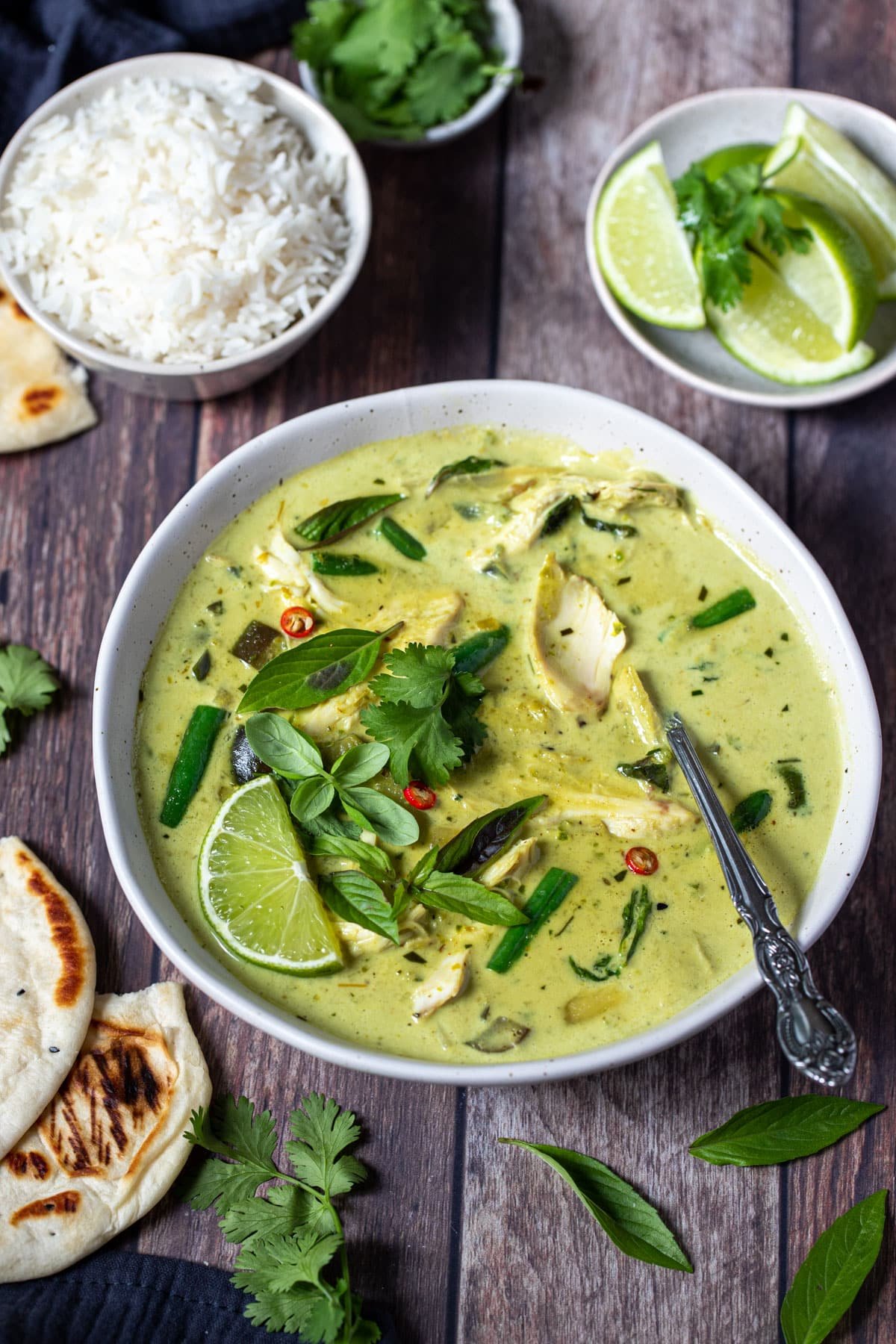
Why you’ll love this recipe
- Quick and easy – this curry is perfect for busy weeknights and is even faster if you keep a batch of my homemade curry paste in the freezer!
- One pan dinner – everything is cooked together in one pan, for minimal clean up.
- You can use homemade curry paste, or swap for store-bought if you’re short on time.
- Customisable – keep it mild or make it spicy. Add your favourite protein like chicken, king prawns or fish; or leave the meat out entirely and add your favourite vegetables.
- Healthy – loaded with veggies, your choice of protein and a gorgeous, nutrient-packed curry paste.
- Freezer friendly – keep a batch in the freezer for an easy, fuss-free dinner.
Serve it with some steamed basmati rice or homemade fried rice. You can also add these vegetable spring rolls as part of a larger feast.
Ingredients you will need
** This post contains tips and instructions to achieve the best possible results. This photo is a great guide for when you are in the supermarket, but for full ingredient quantities and methods, please scroll down to the detailed recipe card below!
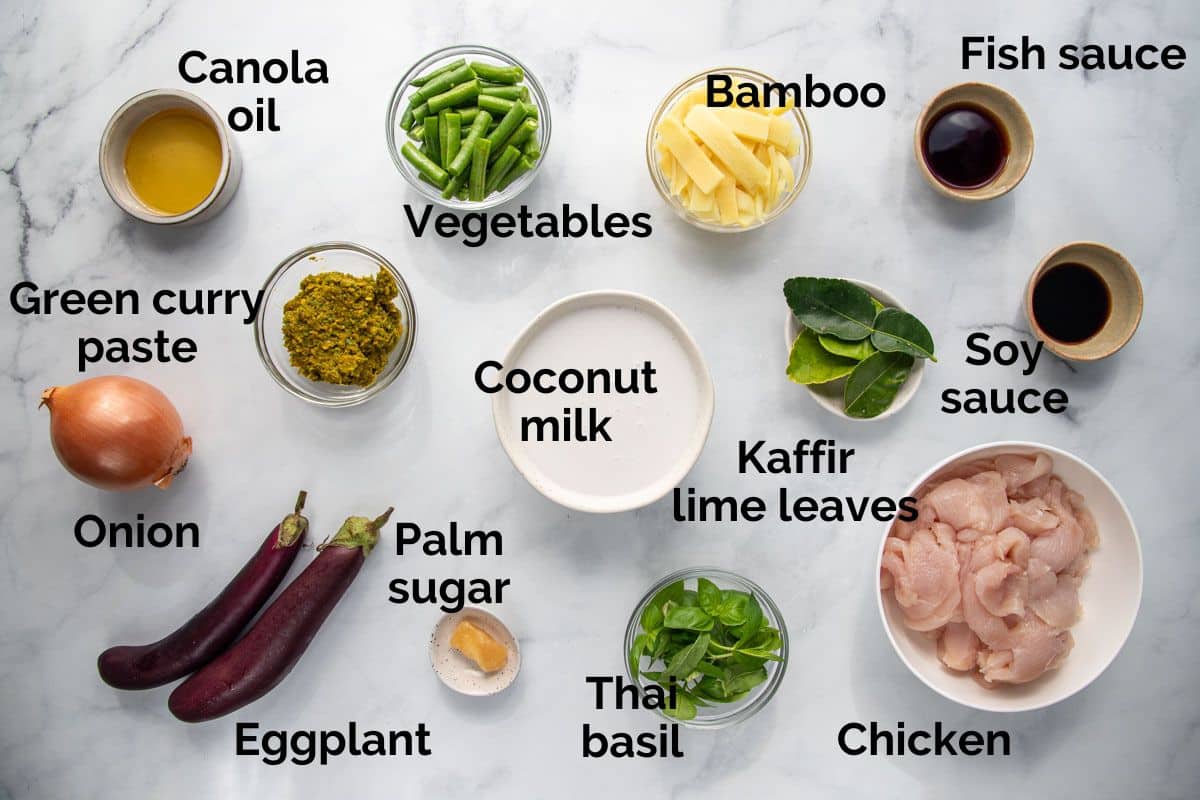
- Chicken – I use chicken breasts for this recipe. Sliced thin, the chicken is cooked in the sauce for only a few minutes, keeping it tender and juicy. However, chicken thighs can also be used and can be simmered for longer while remaining tender. You can also use up leftover chicken by stirring it through the sauce at the end, until heated though.
- Thai green curry paste – I use my homemade green curry paste for the most vibrant flavour. But you can also use store-bought paste for convenience, if preferred. If using curry paste from a jar, choose a good quality brand like Ayam or Valcom for best flavour. If you have the time, try making it from scratch and keeping portions in the freezer, ready to use in no time.
- Coconut milk – use regular, full-fat coconut milk. Low-fat doesn’t provide enough flavour or creaminess and the sauce will be thin. Cans of full-fat coconut milk or coconut cream are best.
- Vegetables – I use baby eggplant, green beans and sometimes baby spinach, but you can use your favourite vegetables or whatever you have in your fridge. This curry is suitable for most veggies, but is most suited to snow peas, green beans, bean sprouts, bamboo shoots, baby potatoes, baby spinach, eggplant, carrot, broccoli or frozen peas.
- Bamboo shoots – young, edible sprouts of bamboo that are commonly used in Asian cooking. These tender and crunchy shoots provide flavour and crunch to the curry. You can find canned bamboo shoots in the international foods section of most supermarkets.
- Kaffir lime leaves – provide a citrusy, fragrant element to green curry. Kaffir lime leaves can be grown fresh, or found in the fresh herb section of the supermarket. If you can’t access them, use a little lemongrass paste or lime zest instead.
- Thai basil – a type of basil that is native to Southeast Asia. It is a staple ingredient in authentic green curry and gives a spicy, aniseed-like flavour. It can usually be found in the fresh herb section of the supermarket, but unfortunately sometimes it’s just not available in some regions. In these circumstances, regular Italian basil can be substituted.
- Lime wedges – to serve. A little squeeze of lime juice when serving adds brightness.
- Palm sugar – to balance sweet and salty. A little palm sugar is crushed and added to the sauce. If you can’t find palm sugar, use the same amount of regular white sugar.
- Fish sauce and light soy sauce – fish sauce and light soy sauce are added to the sauce at the end, to balance sweet and salty. I don’t recommend skipping these ingredients, or the curry sauce will taste a little flat.
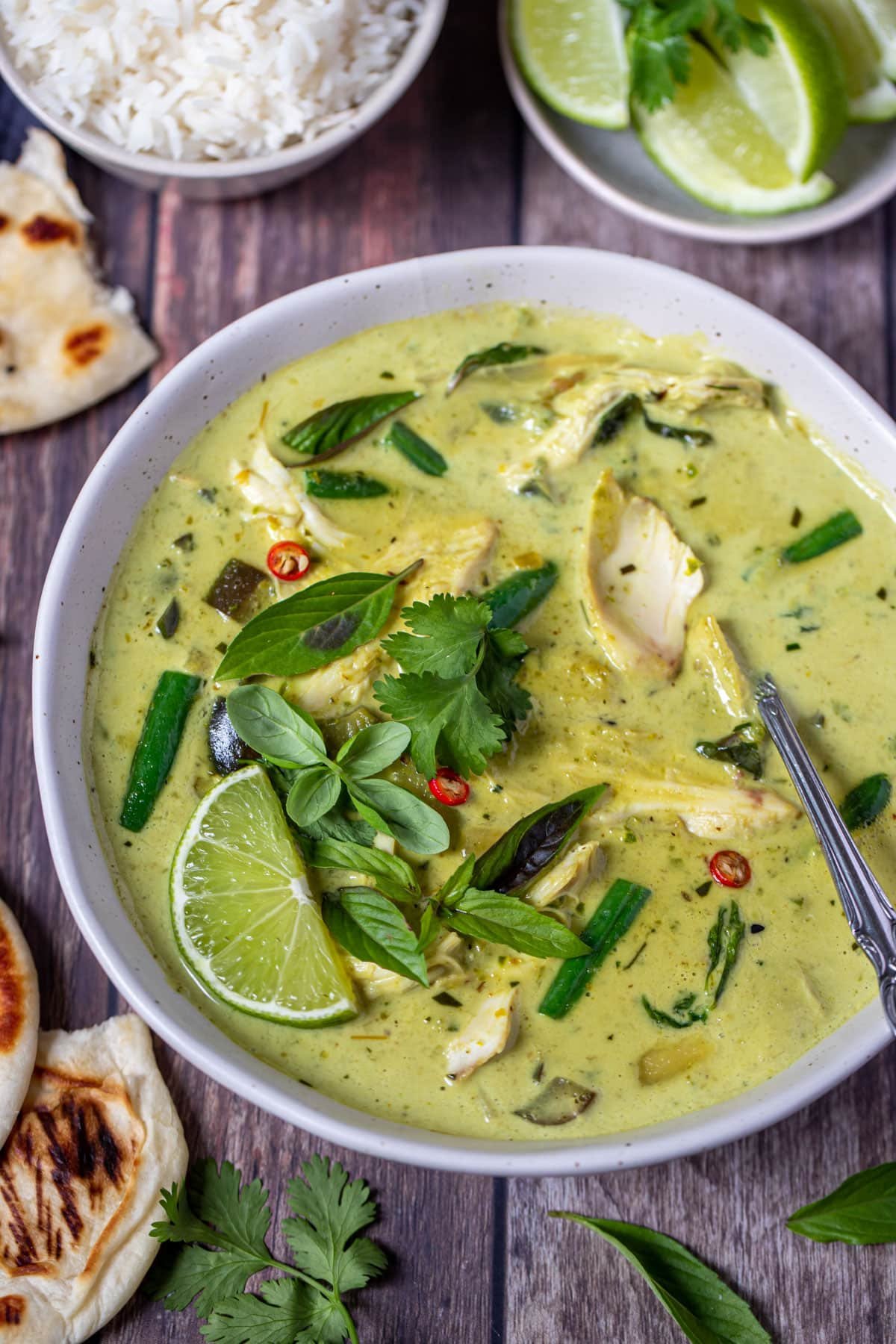
Step by step instructions
Full ingredient notes and quantities can be found in the detailed recipe card below. But here is a brief overview of what you can expect;
Everything cooks together quickly. So before starting, have all of the ingredients prepped and ready to add to the pan.
Step 1. Fry off the green curry paste in a hot pan or wok with a little oil. Stir the curry paste over the heat for 1-2 minutes, until sizzling and fragrant.
Step 2. Add the chopped onion and eggplant and any other veggies and stir fry for 1-2 minutes.
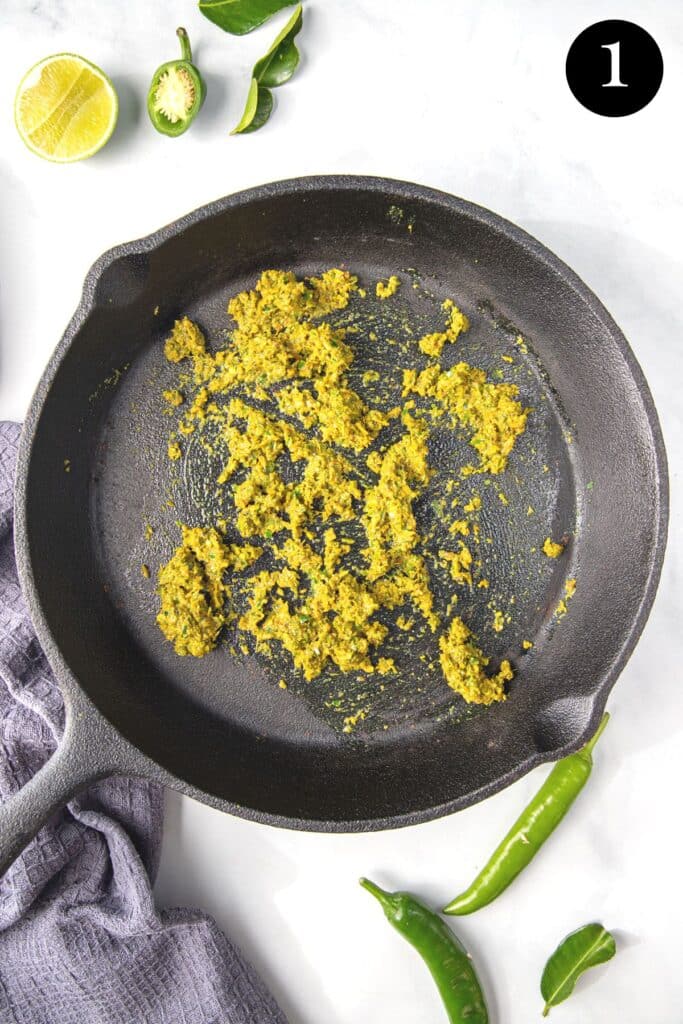
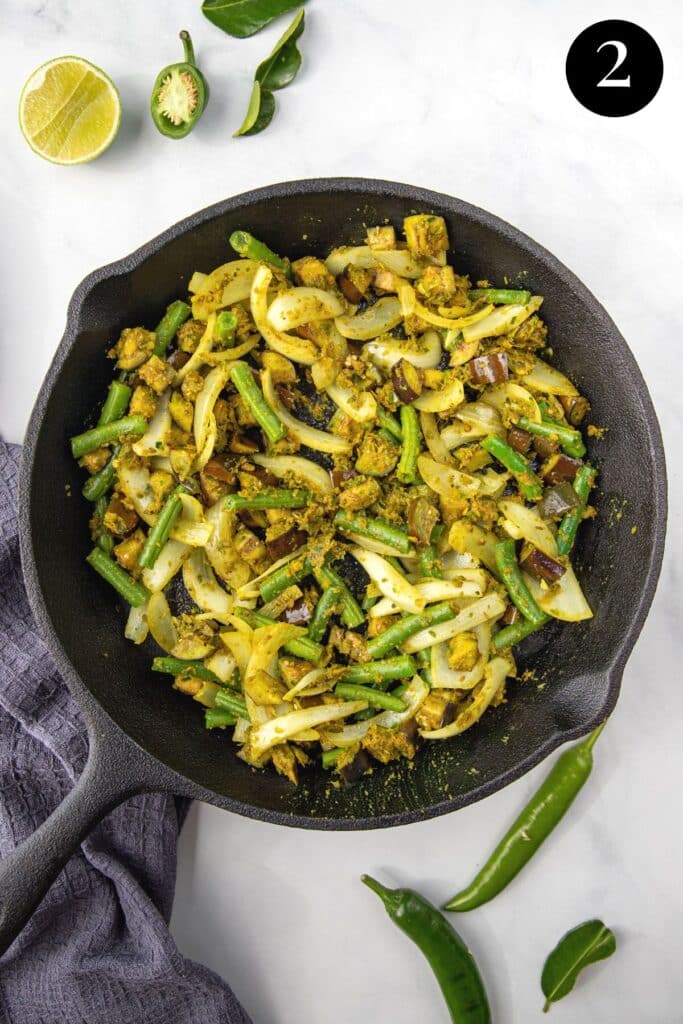
Step 3. Add the coconut milk and bamboo shoots and bring to a simmer.
Stir through the chopped kaffir lime leaves, Thai basil and palm sugar and simmer, stirring occasionally, until the sauce thickens slightly.
Step 4. Taste the curry and add the fish sauce and soy sauce, to taste.
Step 5. Once the sauce is ready, add the thinly sliced chicken breast (or your choice of protein) and simmer, stirring, until the chicken is cooked through. (If using chicken thigh, it can be added earlier and browned in the curry paste as it won’t overcook).
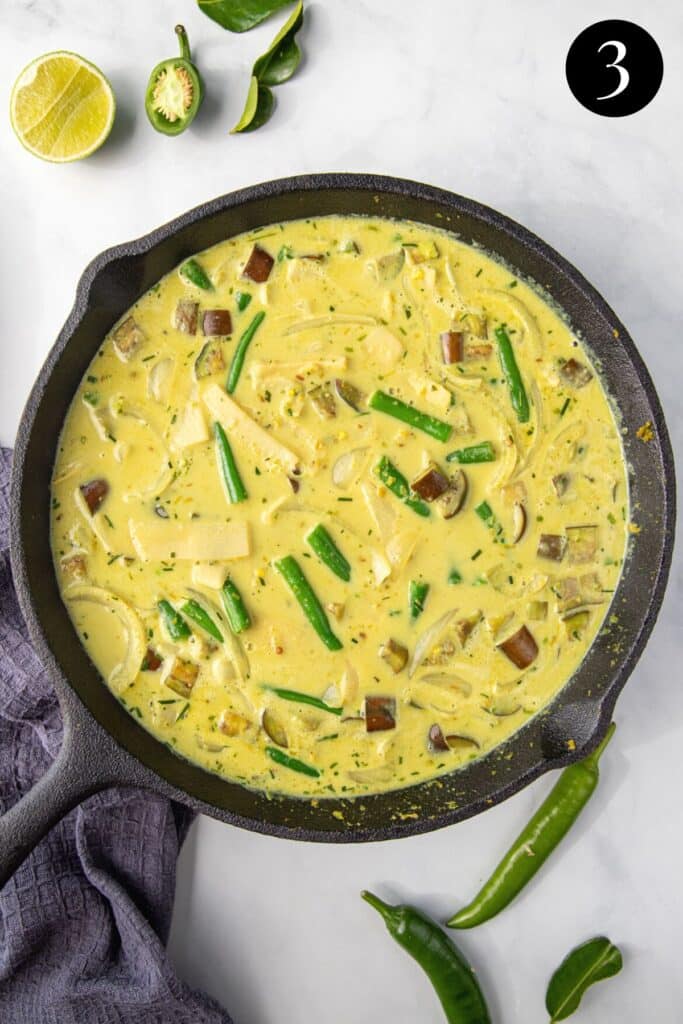
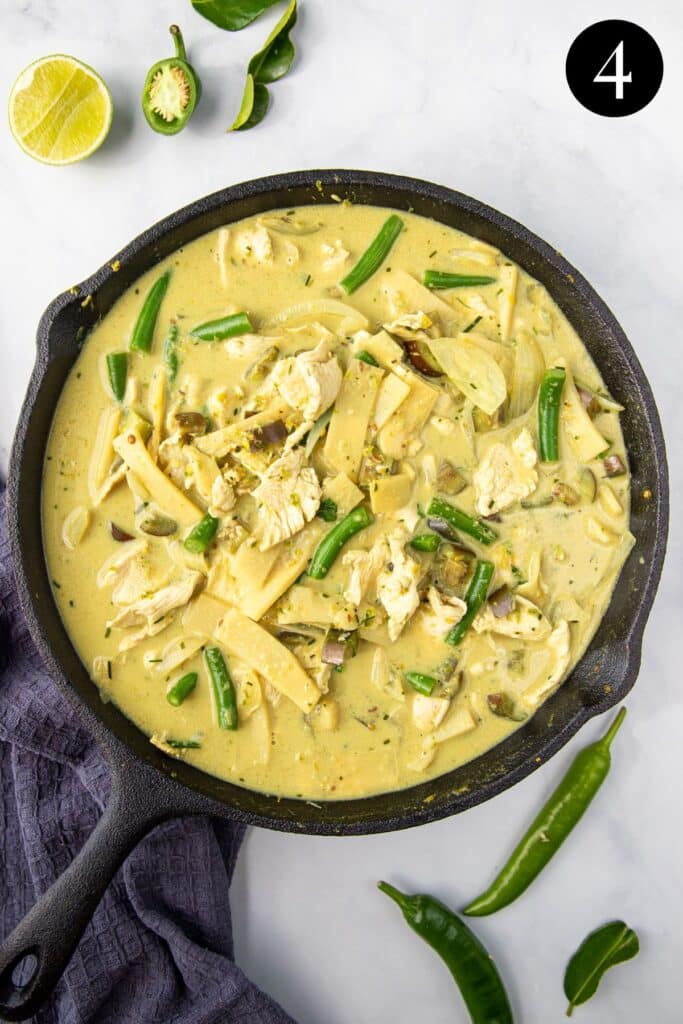
Serve with some steamed basmati rice and extra Thai basil.
Expert tips
- Use any protein of choice – I’ve used chicken breast here, as they are thinly sliced and only cook for a few minutes. Chicken thighs can also be used, or the same curry base works for whole King prawns, sliced pork, beef or tofu. Be aware that the fish sauce, along with the shrimp paste (if using homemade curry paste) keeps this recipe from being vegetarian. Swaps can be made, if required.
- Allow the coconut milk to reduce and thicken before adding the chicken.
- Use shredded rotisserie chicken or leftover chicken to save time. Simply stir it through the simmering sauce at the end, until heated through.
- Have all of the ingredients prepared and ready to add to the wok. Everything cooks together quickly, so it’s easiest to have everything prepped and ready to go before you start.
- Make the curry sauce mild or hot, depending on your taste. The amount of curry paste added and the type of chillies you use to make the paste will determine the heat. Regular, mild green cayenne peppers can be used for a milder flavour, and jalapeno and Thai chillies for more heat. You can also serve the curry with extra green or red chillis, to add more heat.
- To save time, make a batch or curry paste and freeze it in portions, ready to use.
- If using chicken breast, slice the pieces almost paper-thin and add them to the simmering sauce at the end, to cook through. I learnt this trick when I took a Thai cooking class. It cooks the chicken through, while leaving it so tender. Don’t overcook the chicken!
- Taste the sauce at the end and balance with sweet (sugar), salty (fish sauce and soy sauce) or lime juice accordingly.
FAQs
The secret to making a good green curry is to add plenty of aromatics (onion, garlic, Thai basil, kaffir lime) and use a good quality curry paste. While there’s nothing wrong with using store-bought curry paste, homemade curry paste can’t be beaten for maximum flavour.
Sauté the curry paste in oil for a few minutes, to bring out the flavour and fragrance. Choose full-fat coconut milk for richness and maximum creaminess.
A good Thai curry should deliver punchy flavours of spice (hot), salty, sour and sweet flavours. Be sure to taste the curry at the end and adjust/balance the sauce with palm sugar (sweetness), soy and fish sauce (saltiness) and serve with a squeeze of fresh lime (sour) accordingly. Serving with extra Thai basil and chilli finish the curry off perfectly.
Keep leftovers in the fridge in an airtight container for 4-5 days.
Green chicken curry can be reheated in a pan on the stovetop over medium heat, until steaming hot all the way through. It can also be reheated in the microwave, although this method can toughen the protein.
This curry can be frozen for up to 3 months. Allow it to cool before adding it to an airtight container, lined with a freezer-safe bag (for extra protection). Thaw in the fridge overnight before reheating.
Serve Thai green curry over steamed basmati or white rice and garnish with some extra Thai basil, coriander and extra chilli. Some warm roti bread is also perfect for sopping up the sauce!
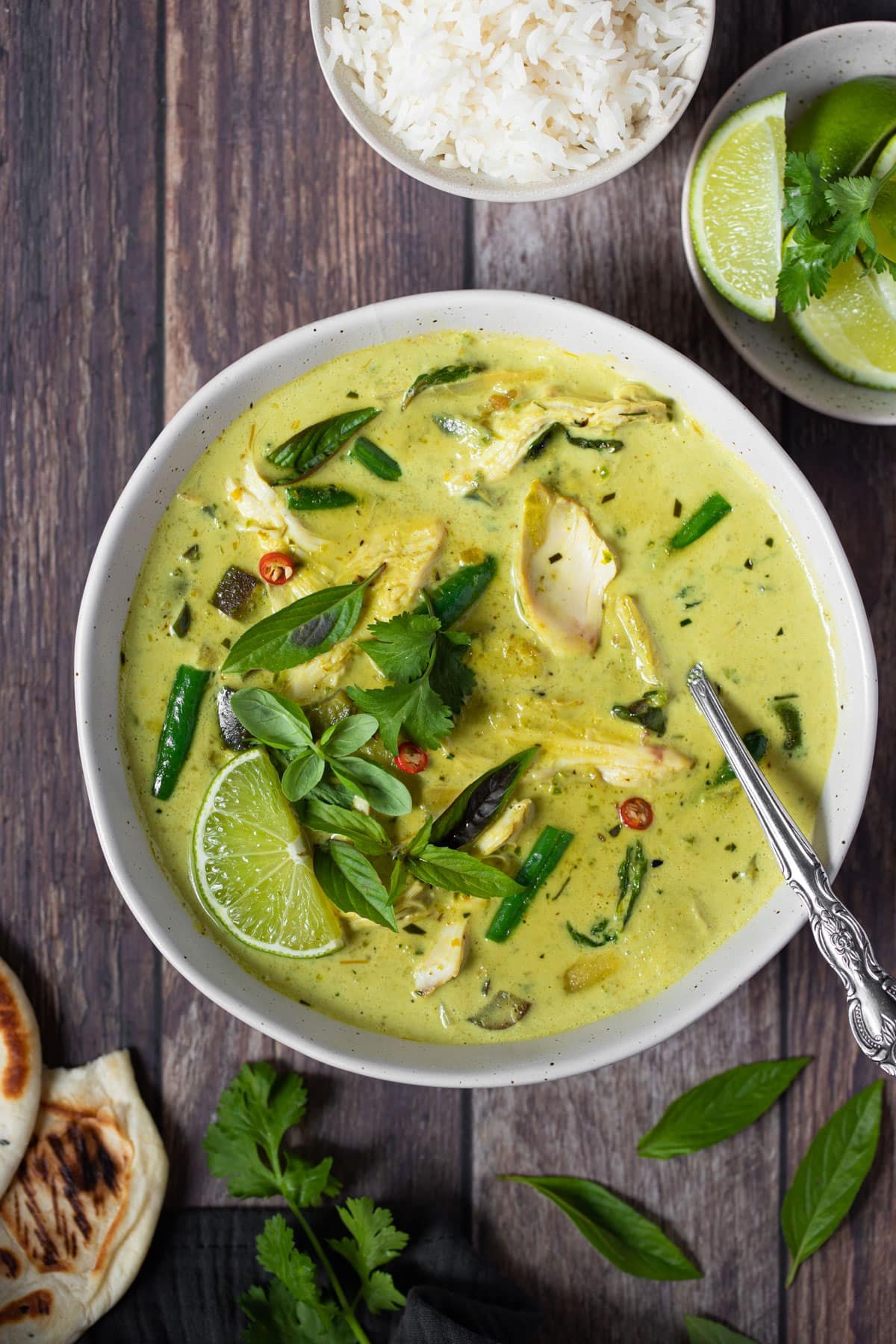
Related recipes
Tried this recipe? Please leave a star ⭐⭐⭐⭐⭐ rating or leave a review below and let you know how you went!
Hungry for more? Subscribe to my newsletter and follow along on Facebook, Instagram and Pinterest for the latest recipes and news.
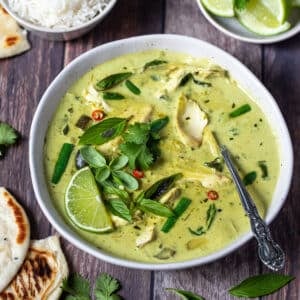
Thai Green Curry with Chicken
Ingredients
- 2 tablespoons vegetable oil
- 4-5 tablespoons green curry paste or to taste. use this homemade green curry paste, or swap for store-bought. (You may need to adjust quantities for store-bought).
- 1 large brown onion peeled and thinly sliced into strips
- 1-2 baby eggplant diced, or swap for vegetables of choice
- 2 – 2 ½ cups coconut milk use regular, full-fat coconut milk for best flavour
- ½ cup bamboo shoots one small can, canned and drained
- 2 teaspoons palm sugar 10 grams, crushed. Or, use white sugar instead
- 3 kaffir lime leaves very finely chopped. Or, use some lime zest or lemongrass paste instead.
- ½ cup Thai basil leaves roughly torn
- 3-4 teaspoons fish sauce or more, to taste
- 2-3 teaspoons light soy sauce or more, to taste
- 500 grams chicken breast skin off, very thinly sliced. Chicken thigh or leftover chicken can also be used.
To serve
- steamed basmati, jasmine or homemade fried rice.
- lime wedges
- additional Thai basil
- sliced chilli red or green (optional)
Instructions
- Heat the oil in a large saucepan or wok over medium-low heat. Add the curry paste and sauté until fragrant (1-2 minutes).*If using chicken thigh instead of chicken breasts, add the chopped chicken thighs to the pan after the paste has sauteéd and cook until browned. If using chicken breast or leftover chicken, keep it out until later.
- Turn the heat up to medium-high and add the onion and eggplant (and/or your choice of vegetables). Stir fry for 1-2 minutes, until soft.
- Add the coconut milk and bamboo shoots and bring to a simmer.
- Add the palm sugar, kaffir lime leaves and Thai basil and stir to combine.
- Taste the sauce and add the fish sauce and soy sauce, to taste.
- Add the thin slices of chicken breast and simmer, stirring, until the chicken is completely cooked through in the sauce. Leftover shredded or chopped chicken can be added to the sauce and simmered until heated through.
- Serve in bowls over steamed rice and top with some additional basil leaves, if desired.
Notes
-
- Use any protein of choice – I’ve used chicken breast, as they are thinly sliced and only cook for a few minutes. Chicken thighs can also be used, but the same curry base works for whole King prawns, sliced pork, beef or tofu. Be aware that the fish sauce, along with the shrimp paste (if using homemade curry paste) keeps this recipe from being vegetarian. Swaps can be made, if required.
- Allow the coconut milk in the sauce to reduce and thicken before adding the chicken.
- Use leftover chicken if you have some to use up. Shredded rotisserie chicken or leftover chicken can be used to save time. Simply stir it through the simmering sauce at the end, until heated through.
- Have all of the ingredients prepared and ready to add to the wok. Everything cooks together quickly, so it’s easiest to have everything prepped and ready to go before you start.
- Make the curry sauce mild or hot, depending on your taste. The amount of curry paste added and the type of chillies you use will determine the heat. Regular, mild green cayenne peppers can be used for a milder flavour, and jalapeno and Thai chillies for more heat. You can also serve the curry with extra green or red chillis, to add more heat.
- To save time, make a batch or curry paste and portion it in the freezer.
- If using chicken breast, slice the pieces almost paper-thin and add them to the simmering sauce to cook towards the end to avoid tough chicken. I learnt this trick when I took a Thai cooking class. It cooks the chicken through, while leaving it so tender.
- Taste the sauce at the end and balance with sweet (sugar), salty (fish sauce and soy sauce) or lime juice accordingly.
- Keep leftovers in the fridge in an airtight container for 4-5 days.
- Reheating; Green chicken curry can be reheated in a pan on the stovetop over medium heat until steaming hot all the way through. It can also be reheated in the microwave, although this method can toughen the protein.
- Freezing; This curry can be frozen for up to 3 months. Allow it to cool before adding it to an airtight container, lined with a freezer-safe bag (for extra protection). Thaw in the fridge overnight before reheating.
- Please note that the nutrition information is based on the curry being divided into 5 bowls, with one bowl being one serve. The nutritional information is an estimate only and does not take into account any rice, additional toppings or sides served with the curry.
- This recipe is made using Australian cups and spoon measurements. Any reference to cups or spoons in this recipe is in Australian metric. Due to cup sizes varying from country to country, I advise adjusting if necessary.
Nutrition
Are you following us on Facebook, Instagram and Pinterest?
Update Notes: This recipe was originally published in February 2019, but was re-published with new information and photos in May 2023.


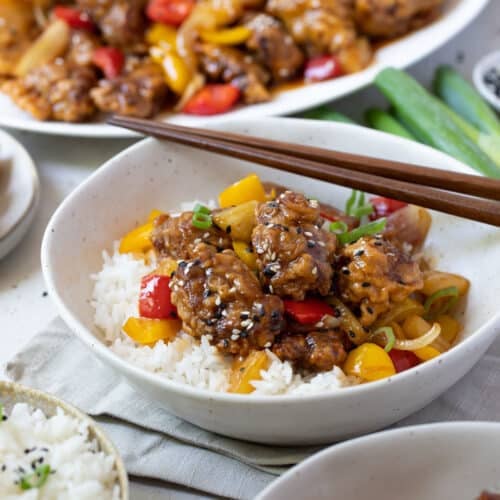
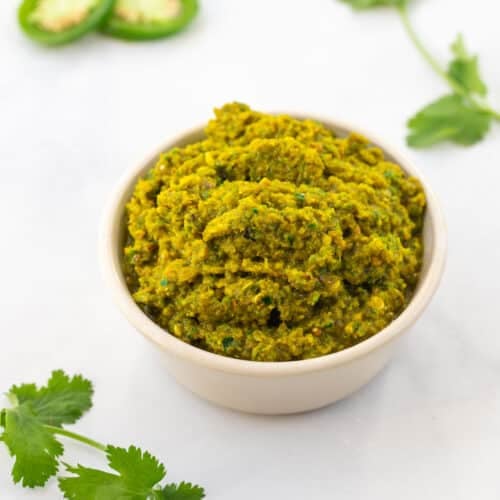
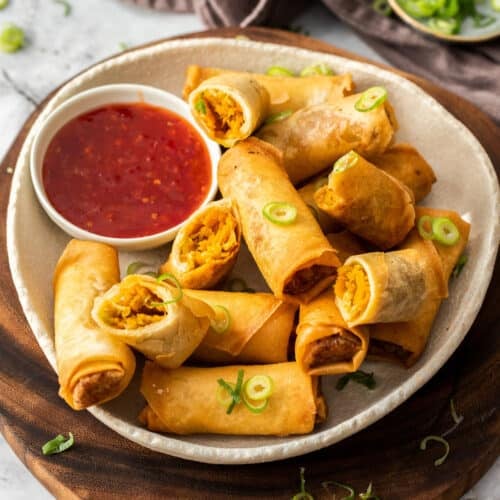
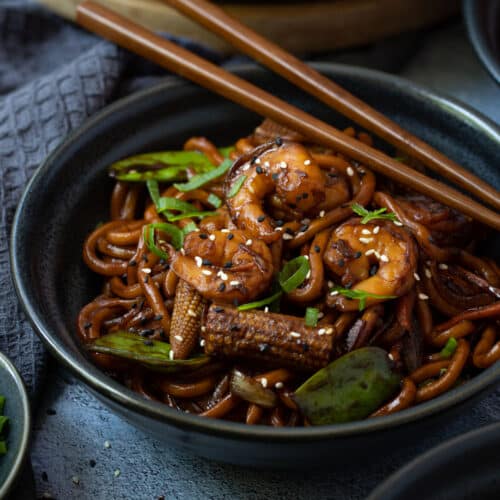
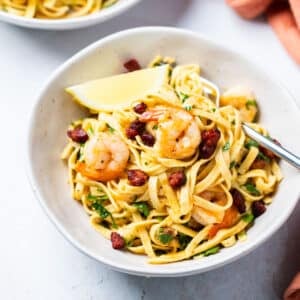

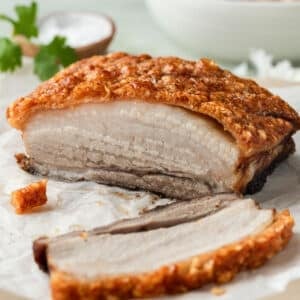

Andrea says
Thank you so much. Mine is still cooking but smells and tastes beautiful. Gracias
Andrea Geddes says
Hi Andrea! I’m so glad to hear that you’ve enjoyed this recipe. Thanks so much for trying it and for taking the time to let me know how you went 🙂